











Learn how our manufacturing processes allow us to deliver various products for our customers.
Learn how our manufacturing processes allow us to deliver various products for our customers.
Learn how our manufacturing processes allow us to deliver various products for our customers.
We work with world-class brands in a variety of industries to bring their visions to life through style, performance and protection.
COMPANY

2022-04-12
Due to the complexity of the investment casting process there are numerous opportunities for things to go wrong resulting in casting defects. Some defects can be tolerated, some can be repaired, but some must be eliminated. Here, we will introduce the common defects, analyze the cause and provide the basic remedies solution for them.
1.Gas porosity:
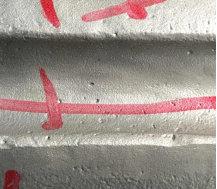
It appears as a round, smooth walled cavity and may present itself on the surface of the casting or trapped inside the metal. This defect will reduce the strength of the castings, especially in the area of the defect. Defects on the surface can be found by appearance inspection, however, subsurface defects can only be tested after machining.
The reason for this defect is: most liquid materials can hold a large amount of dissolved gas. When preheating temperature of casting mold is too low and the cooling of liquid materials is too fast, the gas can not be expelled from the metals and gas bubbles appear as the metal cools.
In order to solve this problem, the casting mold should be fully preheated, the granularity of coatings should not be too thin, permeability needs to be good. Also need to use tilt pouring way when casting.
2.Shrinkage:
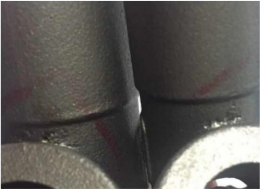
This defects tend to have a jagged or linear appearance. The grains of the shrinkage cavity is big and thick. Often occur in the casting sprue, riser root, thick area, the connecting area between thin & wall thickness. Shrinkage porosity appears with angular edges, compared to the round surface of gas porosity. Large shrinkage cavities can undermine the integrity of the casting and may cause it to eventually break under stress.
Shrinkage defects occur when casting section change (e.g. thick or too thin) or at the feed gate to the casting or when feed metal is not available to compensate for shrinkage as the metal solidifies during cooling.
There are several ways to prevent this type of defect, including improving mold temperature, adjusting the thickness of the coating layer during the casting process and ensuring the right pouring temperature.
3.Crack:
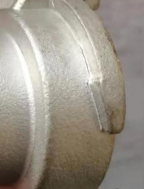
The appearance of the crack is linear or irregular curve. There are thermal crack and cold crack. The surface of thermal crack is dark grey or black due to strong oxidation, no metallic luster. The fracture surface of cold crack is clean with metallic luster. General casting crack can be seen directly, however, inside crack can only be seen using other methods. Cracks are often associated with defects such as shrinkage, slag inclusion. They are mostly occurred in the inside of casting angle, thickness of junction and hot section between poured riser and castings.
Metal mold casting is easy to produce crack defects, because the metal mold does not have deformability itself. High cooling speed will be easy to increase the casting internal stress. Too large or small pouring angle, too thin coating thickness may all cause crack.
So to prevent this problem it need to pay attention to the casting structure, make the uniform transition of non-uniform wall thickness, and to adjust the thickness of the coating and the angle of the mold.
4.Cold shut:
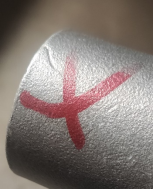
It refers to surface defects in which a line or crack shows up on the casting. It is visible with the naked eye and tends to be impossible to repair. It often appears in the top wall of the casting, thin horizontal or vertical plane, or in the joint area of thin & thick wall thickness.
The potential causes for cold shut are low pouring temperatures, slow pouring speeds or the shell is too cold.
The best way to prevent cold shut is to increase the fluidity of the molten metal, use tilt pouring way and design the right runner and exhaust system.
5.Inclusions:
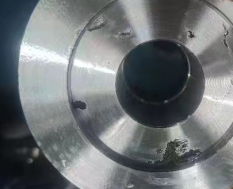
This defect can be the result of foreign particles, usually non-metallic, such as slag, contained within a casting. The inclusion may also be formed by missing areas of metal in the casting resulting in small, round, irregular or angular craters. Additionally inclusions may be depressions or cavities of various sizes, typically superficial with traces of ceramic and refractory material.
There are many possible causes of inclusions: some can occur early in the casting process such as cracks in the wax mold allowing bits of ceramic to get into mold cavity; in some circumstances over hanging ceramic material on the shell can break off during the casting process.
The prevention methods is checking the wax mold, removing slag particles from the molten metal before pouring them into the mold cavity and correcting gating system design or using cast fiber filter.
The knowledge of casting defects and causes is key to managing casting quality. In Stone Industrial we offer our customers always the best quality of the castings.